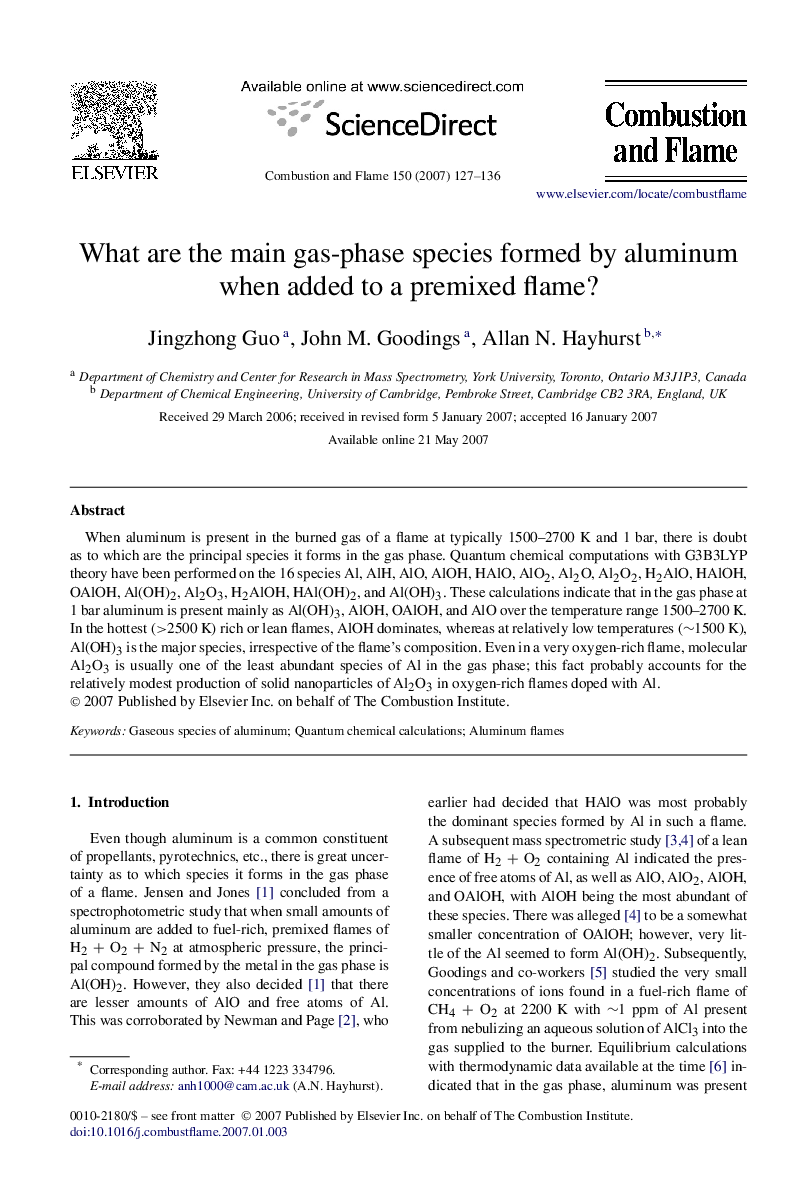| Article ID | Journal | Published Year | Pages | File Type |
|---|---|---|---|---|
| 169701 | Combustion and Flame | 2007 | 10 Pages |
When aluminum is present in the burned gas of a flame at typically 1500–2700 K and 1 bar, there is doubt as to which are the principal species it forms in the gas phase. Quantum chemical computations with G3B3LYP theory have been performed on the 16 species Al, AlH, AlO, AlOH, HAlO, AlO2, Al2O, Al2O2, H2AlO, HAlOH, OAlOH, Al(OH)2, Al2O3, H2AlOH, HAl(OH)2, and Al(OH)3. These calculations indicate that in the gas phase at 1 bar aluminum is present mainly as Al(OH)3, AlOH, OAlOH, and AlO over the temperature range 1500–2700 K. In the hottest (>2500 K) rich or lean flames, AlOH dominates, whereas at relatively low temperatures (∼1500 K), Al(OH)3 is the major species, irrespective of the flame's composition. Even in a very oxygen-rich flame, molecular Al2O3 is usually one of the least abundant species of Al in the gas phase; this fact probably accounts for the relatively modest production of solid nanoparticles of Al2O3 in oxygen-rich flames doped with Al.
